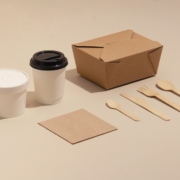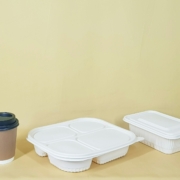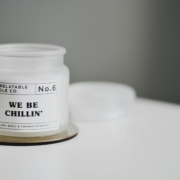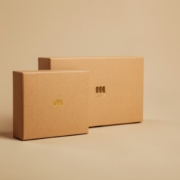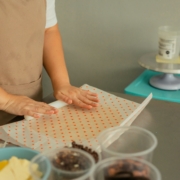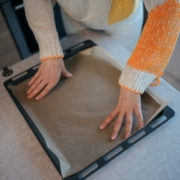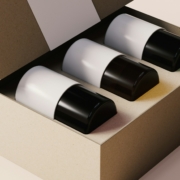What should I bundle with greaseproof paper to elevate my product presentation?
Product presentation plays a major role in how customers perceive a brand, especially when selling items like food or personal care products. The right packaging doesn’t just protect what’s inside, it also communicates your brand’s value, identity, and level of quality. Greaseproof paper offers versatility and function that businesses can rely on while still showcasing visual appeal. Whether it’s used to keep baked goods fresh or prevent oily residue from ruining presentation, greaseproof paper does more than just protect; it contributes to a polished look.
When paired with other packaging elements, greaseproof paper becomes part of a cohesive packaging solution that enhances brand recognition. From pastries in custom cartons to burgers in cardboard tubes and catering platters lined with branded paper, there are plenty of ways to combine this useful material with smart packaging designs. Let’s explore how these combinations can strengthen product presentation and help businesses leave a great impression.
Custom Folding Cartons
Custom folding cartons are a practical and attractive packaging solution, ideal for brands that want to combine structure with aesthetics. These cartons are essentially a blank space for visual branding. With your logo, colors, and brand story printed right on the surface, they offer a strong vehicle for consistent messaging.
Pairing them with greaseproof paper transforms the inner experience while supporting product integrity. For a bakery, this might look like cookies or pastries placed inside a custom carton lined with printed greaseproof paper. This not only enhances the appearance but also adds a protective layer that keeps baked goods from sticking or becoming soggy.
Some benefits of this combination include:
1. Product stability: Keeps items in place and reduces the impact of movement.
2. Premium feel: Printed greaseproof paper adds an extra layer of service and class.
3. Better shelf appeal: Whether on a café counter or a retail shelf, products stand out.
This packaging approach is ideal for baked goods retailers and patisseries aiming to present their items in an inviting and memorable way. With every customer touchpoint, from sight to feel, this combo adds to the user’s positive association with your brand.
Cylindrical and Cardboard Tube Packaging
For those looking to capture attention with creative display formats, cylindrical and cardboard tube packaging offers a distinctive alternative. These packages are visually different, instantly noticeable, and offer a surprising unboxing style that consumers don’t often expect from food or retail products.
Combined with greaseproof paper, these tubes serve both the visual and functional sides of packaging. Greaseproof paper can be used to wrap burgers, sandwiches, dessert items, or even baked snacks before they’re placed inside the tube. The pairing offers a clean, styled presentation that works well for burger shops, pop-up cafés, and themed eateries.
The value of this duo includes:
1. Unique shape: Differentiates your product from standard square or rectangular items.
2. Message clarity: More surface area allows for more creativity in your branding.
3. Food-safe lining: Greaseproof wrap keeps food fresh, clean, and ready to eat.
Cylindrical packaging, when used thoughtfully, offers a surprising first impression while serving the practical needs of your products. It encourages curiosity and gives people something extra to talk about or share.
Greaseproof Paper Sheets for Charcuterie and Catering
Presentation matters at every event, and catering businesses know that even the smallest details can make an impact. Greaseproof paper sheets are a go-to option for food service providers looking to level up their visual presentation. Whether they’re lining trays, cheese boards, or boxes, these sheets add both function and flair.
Custom-printed greaseproof sheets offer a chance to make your brand visible in a beautiful, non-intrusive way. At weddings, corporate events, or private parties, the branding appears naturally as part of the spread, giving guests a way to remember your name without needing a sales pitch.
Advantages for caterers and food stylists include:
1. Cleanliness: Acts as a liner to protect trays from oil, sauces, or crumbs.
2. Branding spotlight: Logos and taglines are seamlessly integrated into the layout.
3. Flexible sizing: Can be cut or folded to suit different surfaces and tray sizes.
This subtle form of branding enhances the perceived quality of service and demonstrates a well-thought-out approach to every event you serve. For high-touch events like weddings, these small touches suggest professionalism and attention to detail that guests will appreciate.
Mailer Boxes
In a time when e-commerce and food delivery are part of everyday business, mailer boxes have become key to customer satisfaction. They provide the protection needed for shipping while serving as the first physical connection between your customer and your brand. Greaseproof paper takes this a step further by supporting both hygiene and presentation inside the box.
Mailing artisanal items, such as cupcakes, fries, burgers, or baked treats? Wrapping products in greaseproof paper inside a sturdy mailer ensures they arrive in great shape and still look appealing. For mobile food vendors like food trucks and street markets, this layered packaging keeps meals tidy, secure, and stylistic.
Here’s why this combination makes sense:
1. Lost-lasting impression: Not just about taste, it’s also about the look and presentation.
2. Unboxing delight: Layers of branded packaging create anticipation and brand recall.
3. Protective layering: Keeps food intact and avoids messy spills during shipping.
Using printed greaseproof paper brings your branding inside the box. It creates a layered reveal, adding personality while keeping everything clean and secure.
Custom Branding Touches Create a Unified Look
Customers remember more than just flavour or product quality. They recall how they were treated, what your product looked like, and what feelings were attached to the experience. Bundling greaseproof paper with features like cartons, tubes, and mailers offers a flexible solution that meets practical needs while strengthening your image.
Working with packaging providers who care about these small but meaningful details can help establish consistency that sets your brand apart. These tailored components don’t just hold your product together; they carry your identity in every fold, print, and wrap.
Strong packaging choices bring benefits across business types:
1. Reinforces identity: Your colours, logos, and tagline appear consistently across formats.
2. Adds value: Customers associate carefully curated packaging with higher quality.
3. Adapts to different formats: Square boxes, round tubes, or flat trays all benefit from custom options.
It’s these additional branded touches that provide a memorable finish to your offerings. Whether you’re sending, serving, or displaying, consistent packaging helps ensure your brand stays top of mind and is recognised wherever it goes.
Working closely with a packaging partner that understands both protection and presentation elevates the value of every product you send out. Through the right mix of material choices, design and thoughtful bundling, your brand becomes more than a logo. It becomes an experience customers won’t forget.
If you’re ready to stop settling for packaging that doesn’t match the quality of your products, it’s time to explore what’s possible with Star Stuff Group. We work closely with businesses to create standout presentation that not only protects but elevates your offering. From artisan cookies to gourmet burgers and event catering, even the smallest details matter. Discover how our solutions like cardboard tube packaging can help give your brand a more premium, cohesive feel. Family-owned and proudly local, we’re here to support your growth with packaging that tells your story the right way.


